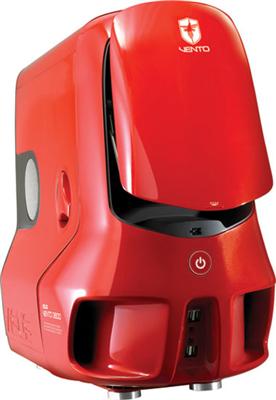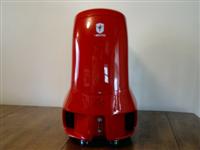Asus Vento 3600
Over the past 10 years or so, the Personal Computer has found its way into a majority of homes, evolving from a high-priced curiosity to an everyday necessity. As with any other market, companies have come and gone during that time period, with their bottom lines inevitably tied to the products they produced. In today's increasingly competitive market, manufacturer's are constantly looking outside of their established lines for new ideas to keep them profitable. Heeding to this call, Asus has also begun to look beyond their motherboard and graphics cards for something new. So far we have seen their S-PRESSO mini-PC, their entry into the wildly popular Small Form Factor market, and recently we got a look at their first chassis, the Asus Vento 3600. Hyped as a gamer's chassis, the mixture of looks and features suggests the Vento's entry into the PC world is a kin to what a Ferrari might be to the automobile market. Whether or not the Vento has what it takes under the hood is the focus of today's article.
| SPECIFICATIONS: Case Size: ATX Mid Tower MB Form Factor: Standard ATX Chassis Material: 0.8mm SECC Drive Bays: 4x 5.25" Ext Bay, 1x 3.5" Ext Bay, 3x 3.5" Int Bay System Fans: Front: 80mm Rear: 120mm Side: Venting hole with air duct Expansion slots: 6 PCI and 1 AGP Slot Dimensions (WxHxD): 12.1" x 20.7" x 24.7" Weight: 24.5 lbs Color Options: Blue/Green/Red Front I/O: 4 USB 2.0 ports, 2 Audio jacks |
 |
The retail box that was delivered to our doorstop appeared twice the expected size of the chassis. Inside, packaged safely within the styrofoam was the red Vento 3600 we had requested for evaluation. Other colors that were available were green and blue, and the choice is entirely up to the builder's desire. In our case, we intended on installing the Epox 5LWA+ we reviewed earlier, which should make the color scheme compatible. Along with the Vento came a short installation manual, and a baggie with assorted screws in it. That's all that can really be expected as the Vento is just the housing - all of the other components are purchased separately and placed inside.
One of the first things you'll notice is that the drive bays are hidden behind the "Magic Mask". Instead of a swinging door that can often be troublesome in tight quarters, such as under a desk, the Vento 3600's front door swivels upward and rests alongside the top of the chassis. Opening the "Magic Mask" revealed four 5 1/4" drive bays and one 3 1/2" bay. An area for concern, however, revolves around the latch mechanism that locks down the cover. The latch required us to push in the cover slightly, but it felt as if there was little give here. It helped to actually push up on the cover a bit when opening the Magic Mask. We also had some reservations about the durability of the latch, which was made entirely of plastic. We have seen simliar mechanisms on other cases that have eventually loosened or had one of the catches break off from repeated use. Thus, the Magic Mask will wind up being a "mask" in name only, as it will permenantly be left in the open position
Ventilation and cooling are main concerns when building a PC, since today's components are running faster and thus hotter than in years past. Serving these needs, the Vento sports two vents on the front, similar in appearance to a fighter jet. These two vents, along with a another one along the side, allow cooler air to enter the chassis, which are then pushed out by the 120mm fan installed on the rear. The Vento also provides for better airflow outside the case with the removable cable management kit. The black frame, seen in the middle photo above, organizes the cables away from the case for a cleaner overall look.















